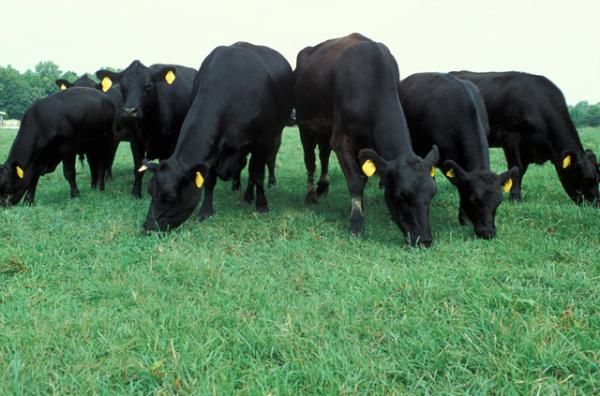
Agricultural News
Don't Graze Pastures Too Early
Fri, 11 Nov 2011 15:31:08 CST
 The recent rainfall that has occurred across much of Oklahoma and the southern Great Plains, will dramatically improve our winter pastures and early spring forage production. However, the recovery of many summer pastures is still unknown. Many forage-livestock producers are hopeful that the coming year will be significantly better than the last.
The recent rainfall that has occurred across much of Oklahoma and the southern Great Plains, will dramatically improve our winter pastures and early spring forage production. However, the recovery of many summer pastures is still unknown. Many forage-livestock producers are hopeful that the coming year will be significantly better than the last.
The obvious question is "how long will it take these drought-damaged pastures to recover"? Unfortunately there is not an easy answer. The reason is that there are lingering drought effects that will not disappear immediately once normal precipitation returns. Since long-term drought recovery is not common, there is no good rule-of-thumb to follow. It could take anywhere from a few years to several years for many pastures to fully recover due to the severity of the drought. This is especially true if drought conditions continue.
Past grazing and management practices will determine the extent of damage that has occurred from the drought. The dry period that began during the summer of 2010 extended into the fall months and continued through winter, spring, and the summer of 2011. Most pastures have been used heavily for two consecutive summers. Some pastures were harvested for hay later than normal or grazed later than normal with little or no opportunity for fall regrowth. An additional complication is that some pastures were not well fertilized, if at all, because of the drought.
Since we do not know the growing conditions for next spring and summer, it is important to develop a strategy to speed pasture recovery to take advantage of the grass growth that occurs. The most important drought management strategy is that of sustaining the forage base.
The good news in this is that in nearly all situations, warm-season and cool-season forages are perennial grasses which have growth mechanisms that allow for continued growth, even under less than ideal conditions.
The single, most important strategy for pasture recovery will be to avoid the temptation to begin grazing as soon as plants begin their spring growth. Overgrazing coupled with severe removal of top growth develops plants with shallow root systems. These plants need an opportunity to replenish their energy reserves and establish new root growth. Ideally, spring and summer grazing on pastures that were grazed heavily should not begin until the plants have 4 or 5 weeks of growth.
Grass growth and production dramatically decreases during a drought, with shallow-rooted plants affected sooner and to a greater degree than more deeply rooted plants. A highly vigorous, deep-rooted plant will be less dependent on frequent precipitation than a shallow-rooted plant. Even though it can be tempting to begin grazing as soon as pastures begin to grow following a drought, grazing drought-weaken pastures too soon can further weaken the plants which may further damage the stand.
It is important to remember that forage response to any management practice is dependent on moisture. However, moisture alone does not cure the long-term effects on plants from drought. Proper management is the best long-term approach to recovery. Most importantly, a modest level of fertilization and possibly some weed control will be required to control competition and allow forage plants a chance to develop.
Our thanks to Daren Redfearn for providing this article over grazing. It was sent out as part of the OSU Department of Plant and Soil Sciences Extension News.
WebReadyTM Powered by WireReady® NSI
Top Agricultural News
More Headlines...




















